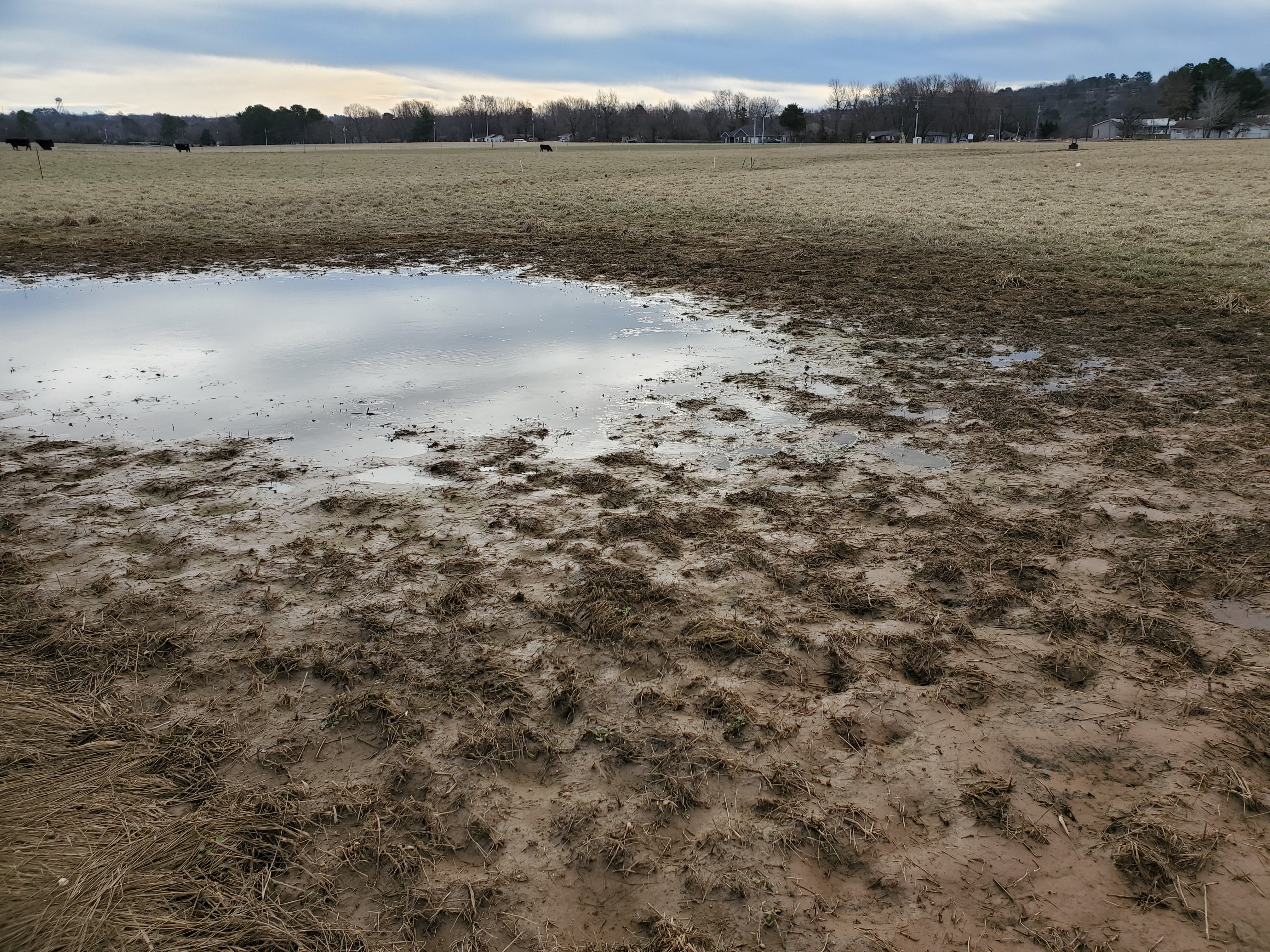As rainfall patterns become more extreme, pasture managers will need to become increasingly proactive
March 7, 2023
By the U of A System Division of Agriculture
Fast Facts:
- Rainfall intensity, frequency need to be taken into account when choosing forages
- Consider reforesting some areas based on topography
(536 words)
(Newsrooms: With art at https://flic.kr/p/2ojPdup and https://flic.kr/p/2ojRV5n)
FAYETTEVILLE, Ark. — Average temperatures in Arkansas have risen about 0.5 degrees over the past two decades, according to the North Carolina Institute for Climate Studies. One result of this has been more extreme patterns of rainfall and drought. Dirk Philipp, associate professor of forage agronomy for the University of Arkansas System Division of Agriculture, said these changes in rainfall patterns typically have a variety of effects — particularly on agriculture.
Based on current climate and weather patterns, Philipp said, these weather extremes may include increased rainfall intensity and extended periods of both higher and lower rain frequency, leading to flooding and drought, respectively — and these changes in rainfall patterns typically have a variety of effects.
“For example, increased intensity means the rain has a higher impact on soil, which equates to higher erosion potential,” he said. “There’s a higher potential for runoff and dislodging soil particles.”
Philipp said changes in rainfall patterns may also lead to decreased rainwater infiltration rates, meaning the soil itself will retain less moisture and aquifers will be slower to recharge. And because evaporation rates are high in the southeastern United States, droughty periods will be relatively more severe for plants in that region than in higher latitudes where incoming solar rays are less powerful.
“Changing rainfall patterns also have biological effects,” Philipp said. “Planting times are affected, because fields may be wetter or drier than in the past during the usual planting times.”
All of this will put stress on existing forage stands and will have implications for establishing new stands as well, Philipp said. To make pastures more resilient in the long term, he has several key suggestions.
“Buffer strips in strategic locations go a long way in capturing runoff and helping to infiltrate it into the soil,” he said. “Extended riparian areas will also achieve that. Buffers around 50-100 feet wide can be grazed, as well.”
Philipp said pasture managers should be conscious of the topography of their land, and should consider reforesting areas that were likely covered in woodlands before farming.
“This doesn’t have to cover a lot of area, but if you can set aside a few acres, that will go a long way of keeping as much rainfall on your land as possible,” he said.
Strategic choices
Philipp said producers should be strategic with their choice of forages, making their
lands more resilient and lowering their economic risks.
“For example, native perennial warm season grasses are drought resistant,” he said. “Plant them in areas that may get more affected by drought. Eastern gamagrass works well for wetter areas and is readily grazed by cattle. Placing cool season perennial forages, such as fescue or orchardgrass, alongside riparian zones will provide forage for spring and fall while decelerating runoff.”
Riparian zones are where land and lakes or streams meet.
Finally, Philipp said that whatever choices producers make initially, it’s important to remain flexible and realize they will need to further adapt over time. This can mean keeping more residual forage after a grazing event, avoiding prolonged stocking in late winter on cool season pastures and more.
“Calculate your forage needs for summer grazing, and plan long-term for planting more areas in warm season annual and perennial forages,” he said.
To learn about extension programs in Arkansas, contact your local Cooperative Extension Service agent or visit www.uaex.uada.edu. Follow us on Twitter and Instagram at @AR_Extension. To learn more about Division of Agriculture research, visit the Arkansas Agricultural Experiment Station website: https://aaes.uada.edu/. Follow on Twitter at @ArkAgResearch. To learn more about the Division of Agriculture, visit https://uada.edu/. Follow us on Twitter at @AgInArk.
About the Division of Agriculture
The University of Arkansas System Division of Agriculture’s mission is to strengthen agriculture, communities, and families by connecting trusted research to the adoption of best practices. Through the Agricultural Experiment Station and the Cooperative Extension Service, the Division of Agriculture conducts research and extension work within the nation’s historic land grant education system.
The Division of Agriculture is one of 20 entities within the University of Arkansas System. It has offices in all 75 counties in Arkansas and faculty on five system campuses.
Pursuant to 7 CFR § 15.3, the University of Arkansas System Division of Agriculture offers all its Extension and Research programs and services (including employment) without regard to race, color, sex, national origin, religion, age, disability, marital or veteran status, genetic information, sexual preference, pregnancy or any other legally protected status, and is an equal opportunity institution.
# # #
Media Contact:
Ryan McGeeney
rmcgeeney@uada.edu
@Ryan_McG44
501-671-2120
